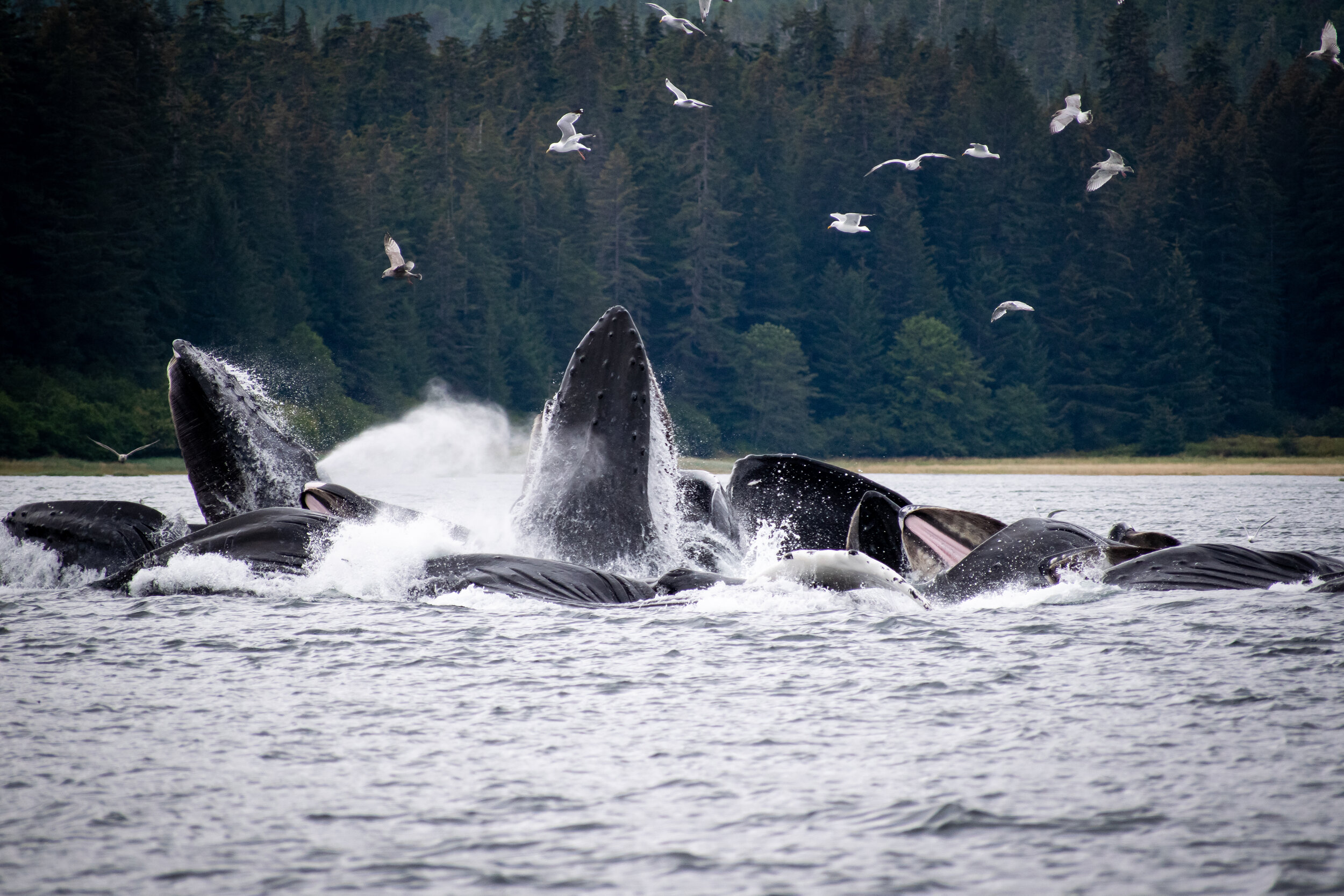I do not like mornings. My early morning brain cannot be trusted with anything of much importance. When I know I will be arriving in Icy Strait Point in the early hours of the day, my bag is packed the night before. Camera, binoculars, and a raincoat are the most essential, the rest is optional.
All I need to do in the morning is pick up my bag and step off the gangway of the ship that is both workplace and home. On the dock, I can breathe in the freshest Alaskan air and look off into the temperate rain forest that line the coasts.
I know those forests of Chichagof Island and the salmon streams that run through them, are home to thousands of coastal brown bears. Roughly four times as many bears as humans reside on the island.
As tempting as it is to go in search of those bears, today is not about them. Instead I turn my feet and walk just the few strides it takes to cross from my Ship to a much smaller boat. Not even having stepped onto firm land yet, I am off to sea once more.
Chichagof Island is one of the ABC islands of Alaska’s Inside Passage. The port of Icy Strait Point is located on the northeastern side, perched at the entrance of Fredrick Sound where it cuts in from Icy Strait.
With the stunning scenic back drop of Alaskan mountain ranges, it’s hard to imagine a more perfect setting. Millions of people from around the world come to see the grandeur of Alaska every year.
Today we are cutting across the surface of the sparkling sea, set on finding the gentle giants that also choose to spend their summers in these northern waters.
We have come for the whales.
The whales in the waters surrounding Icy Strait Point are so abundant that there is no doubt that our small boat will find them. It’s not a question of if… but when. As we gaze off across the chop, the anticipation begins to build.
The whales that we are looking for this morning are Humpback Whales. These colossal creatures can reach a length of 50 feet and weigh an average of 2,000lbs (1 ton) per foot. You would think that it would be absurdly easy to spot an animal of this size, but as they spend nearly 90% of their lives beneath the surface of the ocean, you’ll need a weathered eye on the horizon.
The tell ‘tail’ sign (get it?) is not actually the whale itself. To spot a whale at a distance, you are first looking for their spout, which is also known as a blow. The blow is a column of vaporized water roughly 25 feet tall that is created as the whales breathe with lungs the size of a compact car.
If you’ve ever wanted to shout, “Thar she blows!” this is going to be your chance.
My eyes begin to water as I stare forward into the wind, hoping, as we all are, to be the first to spot the whales. There it is! A silver shimmer on the horizon, many of us on the boat having exclaimed at the same time.
All of us now armed with cameras and binoculars line the sides of the boat. Our captain deftly brings us to a good viewing point while keeping a respectful distance.
With everyone watching in awe and talking in soft murmurs, it is possible to hear the whales with every exhale they make.
The reason that we are guaranteed to see whales in this area and the reason they choose to spend their summers here in Alaska is what lays just out of sight. The waters of Alaska are richer than the hills filled with gold.
Each whale will eat 1 to 1 ½ tons of food per day. They need to put on as much weight as they can to make their migration back to the tropic breeding grounds once Alaska turns cold, or at least colder.
This focus on feasting means that when you are watching whales in Alaska, they are either eating, or traveling to a better spot to eat some more.
Whales will lunge halfway out of the water in pursuit of prey. Sometimes coordinating group feeding efforts with as many as 24 whales!
There is nothing like the thrill of watching whales lunge from the water mouths agape, dive down deep showing off their tails. As many times as I’ve been, it’s always just as exciting and just as spectacular.
There is always a hope when out whale watching that one or more whales will decide to breach.
As our captain tells us that we have exhausted our allotted time and we must be getting back to the pier, I always sigh and watch the spouts fade back into the horizon. I smile with my heart full, knowing I’ll be back. After all, it’s always a Whale of a time, whenever I get to Icy Strait Point.










